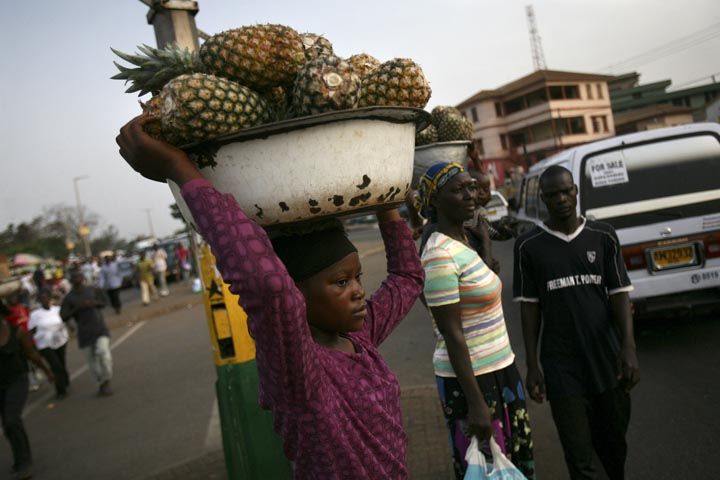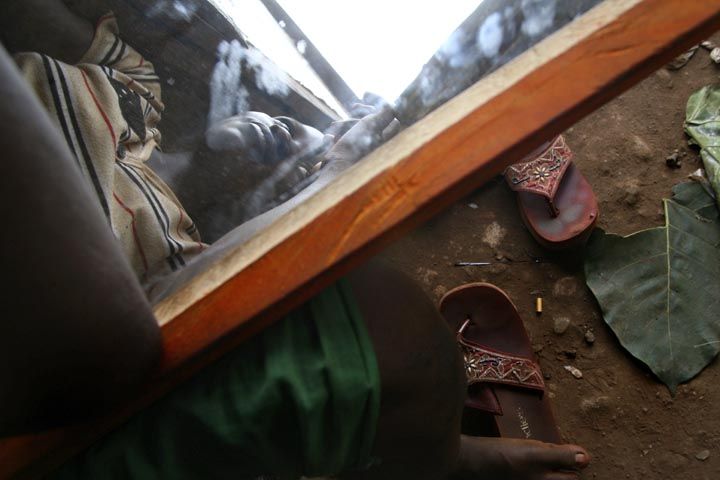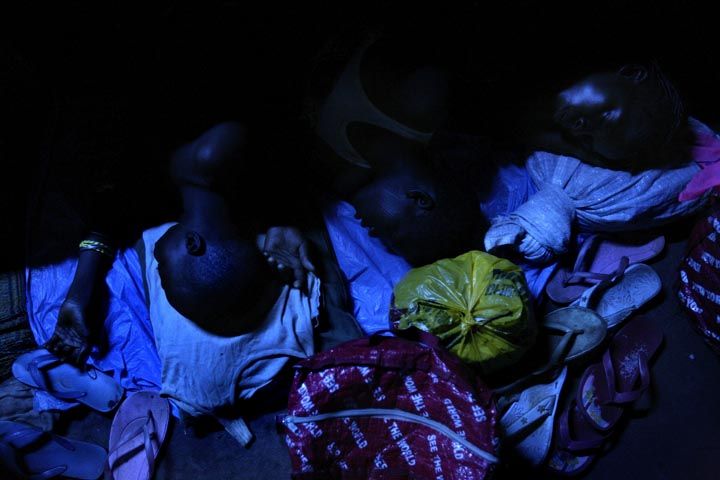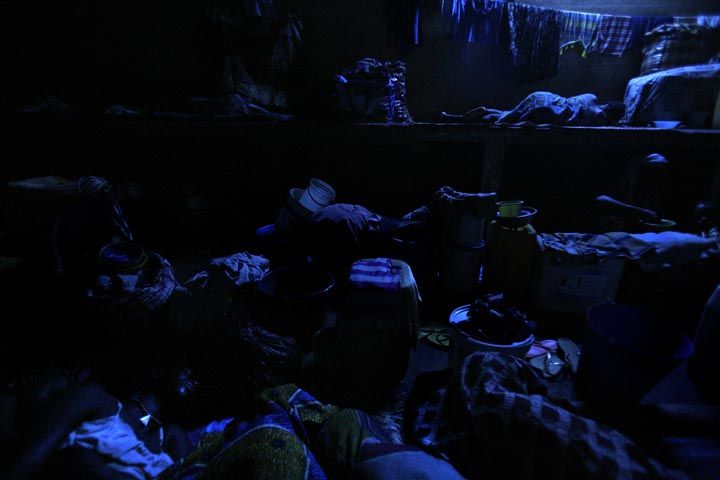Alietu (pictured above) is a girl in her early teens from a village in Ghana's Upper West Region. She left home ten months ago to follow her older sister, Fati, to Kumasi, Ghana's second largest city, where Fati has lived for nine years. The girls' father is deceased, and their mother doesn't work - the family lives off of meager subsistence farming.
In Kumasi, Alietu works as a Kayayo, waiting with other girls at a market entrance for buses to arrive, and then chasing after with the hope that the passengers will need their goods carried home or to a market. On the weekends, Fati trains her to be a hairdresser. Fati worked for years as a Kayayo herself, while at the same time learning hairdressing so that she could earn more money.
The two work out of a small room attached to an old, abandoned building (formerly an ink and chalk factory) where more than 200 Kayayo women and girls sleep, crowding the floors and counter tops of five rooms each night. I recently spent some time with Alietu, the girls she works with, and the inhabitants of the Ink and Chalk Factory - here are a few pictures from the experience.



















